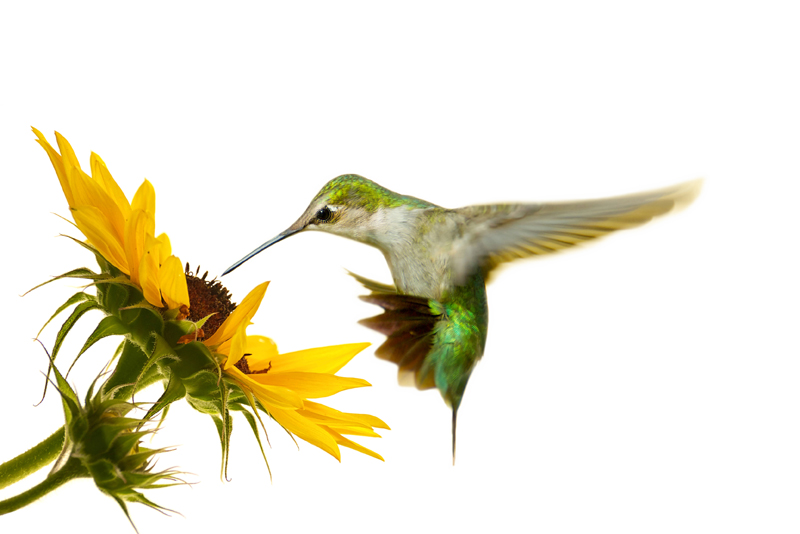Summer Tie-dyeing Options

Although shibori (a Japanese method of dyeing cloth by elaborately twisting, binding, or folding then applying an indigo dye) and Batik techniques (an ancient wax resist process using many dye colors creating complex designs) were seen occasionally prior to 1960s, it is was not until the young pop culture denizens of the 60’s and 70’s adopted the brilliantly colored psychogenic designs made popular by music stars of the era.
There are many DIY dye methods to choose from to apply to a variety of fabrics:
Ice Dyeing - produces a variegated water color effect using ice cubes, powered dye, and soda ash/water solution to pre-treat fabric. The pre-treatment removes any fabric softeners, oils, dirt or manufacturer applied stiffeners that would interfere in the fabric taking up the dye. Mix 2 cups of soda ash with 1 gallon of water. Add fabric to soak for 15 minutes, then tightly ring out (use protective eye wear and gloves) the fabric to place scrunched up/mounded on a cookie/cake cooling rack that has been placed into a plastic container. The cooling rack will help to keep the fabric from pooling into the container bottom. Next cover completely with a thick layer of ice cubes or crushed ice, then sprinkle powdered dye (one or a mix of dye colors) on top of the ice. Once the ice has melted, thoroughly rinse the fabric is cold running water. Then launder and dry as usual to see the final effects.
Dip dyeing - produces an ombre (meaning shade or shadow) effect. Ombre is a graduated shading method (from light to dark). Wash fabric in cool water, wring out, then wrap 2/3 of the garment or cloth around a dowel rod. Immerse bottom third in dye bath for a few minutes. Unroll middle third, then dip again into the dye bath for a few minutes. Finally unroll remaining cloth and quickly dip all into the dye bath. Squeeze out dye from garment or cloth, (recommendations on dye product indicate to place item – only the dyed part- into a fixative for color retention) then wash in warm water, rinse, dry.
Wax resist – an intense dye method that can create complex patterns. Wax (mostly beeswax or paraffin) is used to prevent dye from penetrating different areas of the cloth. Creating Batik cloth uses a multi-layered wax resist technique where wax is painted or stamped onto the fabric. By applying wax and over dyeing repeatedly to the fabric, an overlapping color design emerges. The wax can be boiled or ironed out leaving a soft wash of colors. There are masters of Batik however an acceptable process can be experimented at home.
No Wax Batik – similar results to traditional wax resist methods can be achieved using a flour paste to outline or draw designs on fabric, then immerse in a dye bath.
Shibori – a shape resist methods with many styles (like paper folding) and indigo blue dye. Fabric can be folded like an accordion, then dyed with an indigo blue dye producing linear patterns; twist or bunch then bind the fabric tightly with rubber bands or string then apply the indigo dye to produce beautiful soothing patterns.
Direct dyeing (no fixing agent) - may be the method many are most familiar with as dye is water-soluble and easy to use for most washable fabrics. Rit Dye, liquid or power, is most familiar and comes in an astonishing array of colors.
Bleach designs - like tie-dying in reverse, using chlorine bleach to remove fabric color from desired areas. Fold, scrunch or bunch fabric or garment, tie tightly, then immerse in a solution of 1-part bleach to 10 parts water. Check the submerged cloth every few minutes until near to the desired color. Cut the fabric ties and dip into a neutralizing solution (1-part hydrogen peroxide to 10 parts water). Launder as usual.
Dying fabric or a favorite garment can create a lovely mess, however the end result is always a delightful surprise. Best to use a natural fiber cloth such as cotton, linen, silk, rayon, ramie or wool or a garment of natural material. Always wear protective gloves and eye wear. Inexpensive plastic buckets make the best containers for submersing and rinsing! Summer is definitely the best time to experiment with different dyeing methods as most projects can be completed outside, hopefully while the sun is shining.
Sew happy, sew inspired.
There are many DIY dye methods to choose from to apply to a variety of fabrics:
Ice Dyeing - produces a variegated water color effect using ice cubes, powered dye, and soda ash/water solution to pre-treat fabric. The pre-treatment removes any fabric softeners, oils, dirt or manufacturer applied stiffeners that would interfere in the fabric taking up the dye. Mix 2 cups of soda ash with 1 gallon of water. Add fabric to soak for 15 minutes, then tightly ring out (use protective eye wear and gloves) the fabric to place scrunched up/mounded on a cookie/cake cooling rack that has been placed into a plastic container. The cooling rack will help to keep the fabric from pooling into the container bottom. Next cover completely with a thick layer of ice cubes or crushed ice, then sprinkle powdered dye (one or a mix of dye colors) on top of the ice. Once the ice has melted, thoroughly rinse the fabric is cold running water. Then launder and dry as usual to see the final effects.
Dip dyeing - produces an ombre (meaning shade or shadow) effect. Ombre is a graduated shading method (from light to dark). Wash fabric in cool water, wring out, then wrap 2/3 of the garment or cloth around a dowel rod. Immerse bottom third in dye bath for a few minutes. Unroll middle third, then dip again into the dye bath for a few minutes. Finally unroll remaining cloth and quickly dip all into the dye bath. Squeeze out dye from garment or cloth, (recommendations on dye product indicate to place item – only the dyed part- into a fixative for color retention) then wash in warm water, rinse, dry.
Wax resist – an intense dye method that can create complex patterns. Wax (mostly beeswax or paraffin) is used to prevent dye from penetrating different areas of the cloth. Creating Batik cloth uses a multi-layered wax resist technique where wax is painted or stamped onto the fabric. By applying wax and over dyeing repeatedly to the fabric, an overlapping color design emerges. The wax can be boiled or ironed out leaving a soft wash of colors. There are masters of Batik however an acceptable process can be experimented at home.
No Wax Batik – similar results to traditional wax resist methods can be achieved using a flour paste to outline or draw designs on fabric, then immerse in a dye bath.
Shibori – a shape resist methods with many styles (like paper folding) and indigo blue dye. Fabric can be folded like an accordion, then dyed with an indigo blue dye producing linear patterns; twist or bunch then bind the fabric tightly with rubber bands or string then apply the indigo dye to produce beautiful soothing patterns.
Direct dyeing (no fixing agent) - may be the method many are most familiar with as dye is water-soluble and easy to use for most washable fabrics. Rit Dye, liquid or power, is most familiar and comes in an astonishing array of colors.
Bleach designs - like tie-dying in reverse, using chlorine bleach to remove fabric color from desired areas. Fold, scrunch or bunch fabric or garment, tie tightly, then immerse in a solution of 1-part bleach to 10 parts water. Check the submerged cloth every few minutes until near to the desired color. Cut the fabric ties and dip into a neutralizing solution (1-part hydrogen peroxide to 10 parts water). Launder as usual.
Dying fabric or a favorite garment can create a lovely mess, however the end result is always a delightful surprise. Best to use a natural fiber cloth such as cotton, linen, silk, rayon, ramie or wool or a garment of natural material. Always wear protective gloves and eye wear. Inexpensive plastic buckets make the best containers for submersing and rinsing! Summer is definitely the best time to experiment with different dyeing methods as most projects can be completed outside, hopefully while the sun is shining.
Sew happy, sew inspired.

Related Articles
Editor's Picks Articles
Top Ten Articles
Previous Features
Site Map
Content copyright © 2023 by Cheryl Ellex. All rights reserved.
This content was written by Cheryl Ellex. If you wish to use this content in any manner, you need written permission. Contact Cheryl Ellex for details.







